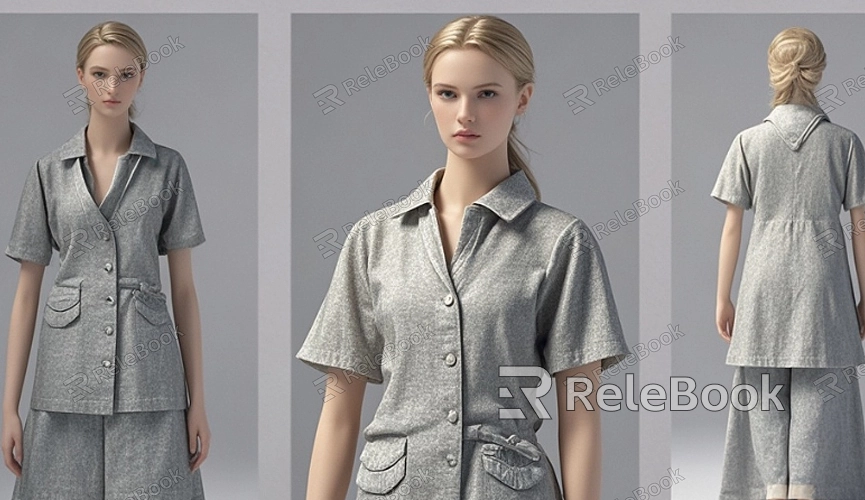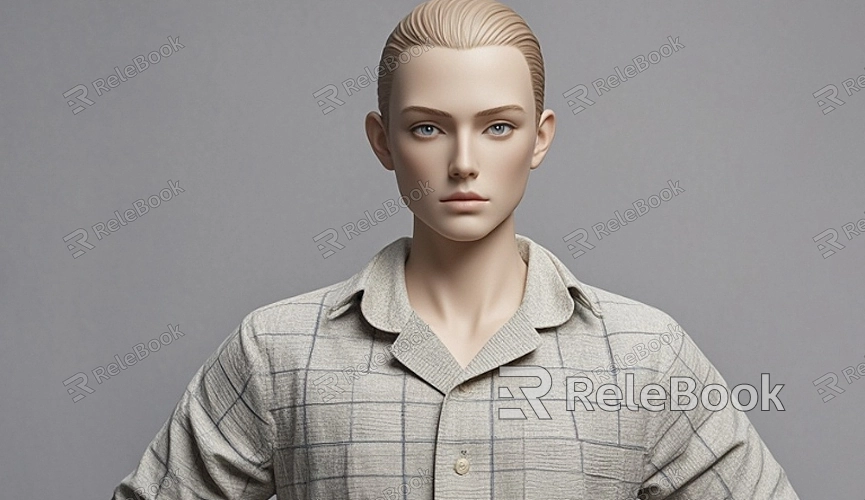How to Create a Character Model in SketchUp?
In the realm of 3D modeling, SketchUp is widely recognized for its intuitive interface and powerful features. Although it's primarily known for architectural and interior design, it can also be used to create various 3D models, including character models. This article will provide a detailed guide on how to create character models in SketchUp, helping you master this skill.

Preparation
Before starting on your character model, make sure you are familiar with the basic operations of SketchUp. If you are a beginner, consider going through some introductory tutorials to understand SketchUp's interface and tools. Preparing for character modeling involves selecting reference images and planning the basic structure of the model.
1. Choosing Reference Images
The first step in creating a character model is selecting suitable reference images. You can find frontal and side views of characters online to use as references in SketchUp. Ensure these images are clear and symmetrical for accurate modeling.
2. Setting Up SketchUp File
Open SketchUp and create a new file. Set the appropriate units and scale to ensure your character model is accurate in size. Using millimeters or centimeters as units is recommended for precise control over the model's dimensions.

Creating Basic Shapes
In SketchUp, character modeling begins with creating basic shapes. These shapes will serve as the foundation for your detailed model.
1. Drawing the Head
Start by drawing a circle using the circle tool, then extrude it into a cylinder to serve as the basic shape for the head. Use the push/pull tool to adjust the cylinder to the desired head shape.
2. Creating the Body
For the body, you can use a rectangular prism as the base shape. Adjust the size of the rectangle using the push/pull and scale tools until it matches your design requirements. You can also use Boolean operations to merge multiple basic shapes for a more complex body structure.
3. Adding Limbs
For the limbs, use cylinders or rectangular prisms as the base shapes. Draw two cylinders for the arms and two larger cylinders for the legs. Adjust their size and position with the push/pull and scale tools to ensure they are proportionate to the body.
Refining the Model
Once the basic shapes are in place, you can start refining the model to add more detail and realism.
1. Adjusting Facial Features
Use the sculpting tools available in SketchUp to refine facial details, such as the eyes, nose, and mouth. Employ different tools to add depth and make these features more lifelike.
2. Adding Clothing and Accessories
To enhance realism, add clothing and accessories to your character model. Use the drawing and push/pull tools to create basic shapes for clothing and apply them to the model. For accessories like hats and glasses, create them separately and attach them to the character.
3. Painting and Texturing
Finally, adding paint and textures can significantly improve the model's realism. Import texture maps and apply them to different parts of the model. Adjust the texture mapping to ensure it conforms to the model's shape and structure.
Finalizing and Exporting
When you are satisfied with the model's details and appearance, proceed with the final adjustments and export.
1. Reviewing the Model
Before exporting, carefully review every detail of the model to ensure there are no errors or omissions. Check the model's proportions, details, and texture applications to ensure everything meets your requirements.
2. Exporting the Model
SketchUp supports various export formats, including STL and OBJ. Choose the appropriate format for your needs and export the model file to your computer. Go to the “File” menu, select “Export,” choose the desired format, and save the file.
Creating a character model in SketchUp involves several steps, from basic shape creation to detail sculpting and texturing. Once you master these steps, you can produce detailed and realistic 3D character models. We hope this guide has been helpful. For more high-quality 3D models and textures, visit the Relebook website to download the resources you need.
FAQ
How can I make the character model more realistic?
Using high-quality texture maps and detailed sculpting can significantly enhance the realism of your character model. Ensure that your reference images are rich in detail and pay attention to the proportions and features of the character during modeling.
Does SketchUp support animation creation?
SketchUp itself does not support complex animation creation, but you can use plugins or export the model to other 3D software (like Blender) for animation purposes.
How do I handle irregular parts of the model?
For irregular parts, you can use SketchUp's sculpting tools to make adjustments. If the irregular parts are complex, consider breaking them into simpler components for easier modeling.
Are there any plugins that can assist with character modeling?
There are several plugins available for SketchUp that can assist with character modeling, such as “Skimp” and “SketchUp Animator.” These plugins offer additional modeling tools and features to help you create characters more efficiently.

